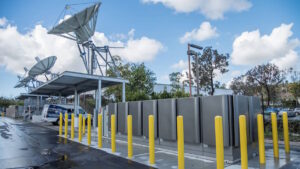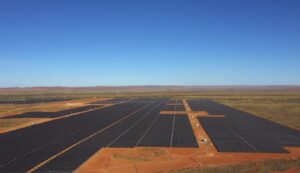Oil and gas giant Woodside will begin expanding its business into lower energy sources, announcing a new investment target to boost its hydrogen and carbon capture and storage capabilities as the company reckons with an accelerating global energy transition out of fossil fuels.
In making the pitch for a new US$5 billion (A$7 billion) investment target for “new energy” projects, Woodside CEO Meg O’Neill told an investor briefing on Wednesday that the company would look to diversify its energy products into hydrogen while adding carbon capture and storage to its existing projects.
O’Neill cited scenarios published by the International Energy Agency, showing pathways to zero net emissions globally by 2050, to argue that further investment in oil, gas and hydrogen will be needed.
“Under all four scenarios, significant investment is expected in oil and gas, with growing hydrogen investment required especially in the Net Zero 2050 scenario,” O’Neill told the briefing.
“Even in the Net Zero scenario, the forecast cumulative investment in oil and gas needed to meet the world’s energy needs is immense at approximately $10 trillion.
“It is clear there is an important role for oil, gas and hydrogen, and our strategy to develop a diversified and resilient portfolio will help enable Woodside to thrive through the energy transition.”
Woodside’s plan will see it invest in a mix of renewable hydrogen facilities and fossil hydrogen production at its existing gas facilities, which would include its forthcoming Scarborough development, with a commitment to capture and store associated emissions.
While it is well short of a commitment from Woodside to actively divest itself of its fossil fuel assets – the company is still planning to significantly increase its production of gas – it is at least some recognition that the company’s future will require it to pivot into energy sources beyond fossil fuels.
Woodside’s approach, it appears, will be driven by economics rather than a proactive embrace of decarbonisation, with the company making investments in new technologies where it expects to generate stronger financial returns.
O’Neill said this would include a focus on meeting a growing market demand for hydrogen, cutting the company’s operational and scope-3 emissions through carbon capture and storage technologies, and building a 3,000MW portfolio of “lower carbon” electricity generation capacity to supply its projects and hydrogen production facilities.
Woodside has already flagged plans for three hydrogen production facilities in Australia, including a 250MW proposal for a “clean” hydrogen facility in Perth and a 300MW renewable hydrogen facility at Bell Bay in Tasmania. Both projects would produce hydrogen and ammonia for local use and export.
Woodside will also develop a 5MW solar thermal demonstration facility in California, through a partnership with the Bill Gates backed Heliogen, that promises to deliver 24/7 supplies of electricity.
O’Neill suggested that Woodside would also focus on supporting early opportunities for the use of hydrogen.
“Two prospective markets which are getting particular focus right now are heavy vehicle transport and power generation,” O’Neill said.
“Using hydrogen to fuel heavy vehicles is a compelling way to seed a hydrogen market, as there is limited refuelling infrastructure required for trucks doing point to point runs from a depot.”
“We expect that in the mid-2020s the new energy transition will be underway, including the start-up of the first of our energy projects. We could potentially be exporting ammonia from Australia and developing carbon capture and utilisation opportunities.
Woodside has faced pressure from investors to articulate how it will manage a global transition towards lower emissions energy sources and how it proposes to respond to a growing focus on the preparation of decarbonisation strategies by companies that have traditionally been focused on fossil fuels and other high-emitting industries.
Woodside will become one of the world’s largest pure-play fossil fuel companies following a planned $41 billion merger its business with the oil and gas business of resources giant BHP. The merger would establish Woodside as the largest energy company listed on the ASX, as well as a top ten fossil fuel company globally.
Woodside is already implementing a planned expansion of its fossil fuel business, recently announcing it had reached a final investment decision on a A$16.8 billion spend on its Scarborough and Pluto Train 2 gas developments.
By comparison, the $7 billion low carbon energy investment target for the rest of the decade is comparatively modest.
Good, independent journalism takes time and money. But small independent media sites like RenewEconomy have been excluded from the millions of dollars being handed out to big media companies from the social media giants. To enable us to continue to hold governments and big business to account on climate and the renewable energy transition, and to help us highlight the extraordinary developments in technology and projects that are taking place, you can make a voluntary donation here to help ensure we can continue to offer the service free of charge and to as wide an audience as possible. Thank you for your support.







